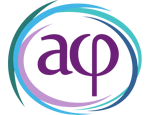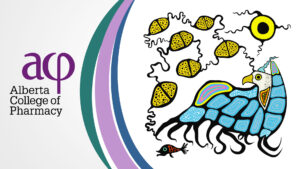
For a pharmacy professional, the ultimate goal is to provide safe, quality, person-centred care and pharmacy teams work hard every day to make that happen.
But what happens when something goes wrong?
“As a student, I was involved in a practice incident. There were two bottles in the fridge side by side with the same medication but in different doses. I grabbed the wrong bottle and the patient received the wrong dosage of medication that was intended for a different patient. Thankfully, the patient noticed the name on the bottle was incorrect and returned the medication to the pharmacy.”
The pharmacist who opened up about this incident wished to remain anonymous, but they felt it was important to share their story of being involved in a practice incident because the way the incident was handled has shaped their personal approach to continuous quality improvement.
“I didn’t learn about the incident for weeks and when I did hear about it, it was in a team meeting where I was singled out by the licensee.”
The pharmacist said that because they didn’t know about the incident until weeks later, it was difficult to reflect on what might have led to the mistake.
“When a practice incident happens, you want to analyze every step of the process right away,” said the pharmacist. “It’s important to look at individual actions and system factors like workload, workflow inefficiencies, communication breakdowns, and staffing shortages because all of those factors can play a role. But you can only get a sense of what happened if you reflect on the incident and involve the team members in the discussion.”
The pharmacist said that, in their case, that discussion and analysis never happened.
“The licensee never once reached out and asked my side of the story to get a sense of what happened or what led me to make the error—it seemed like the focus was on assigning blame rather than understanding what went wrong and how to prevent similar errors in the future.”
The pharmacist said that this incident deeply affected them.
“It was difficult. I was a pharmacy student without much experience in the pharmacy. It would have been nice to feel supported and to be able to learn from the incident, but instead I felt blamed and singled out,” said the pharmacist. “The licensee’s approach initially led to me feeling fear and defensiveness.”
Licensees, as leaders in the pharmacy, have an essential role in supporting their team members when a practice incident or close call occurs. ACP’s Standards for the Operation of Licenced Pharmacies (SOLP) outline a number of responsibilities for the licensee, including discussing and documenting the incident with the involved team members, analyzing the incident to determine contributing factors and root causes, and working with the pharmacy team to prevent future incidents and foster continuous quality improvement.
As per the SOLP, the licensee and proprietor are also responsible for ensuring the pharmacy has the processes, policies, staffing, technologies, training, and resources required to minimize risk. These foundational elements are a proactive consideration to help prevent practice incidents.
The pharmacist said one of the important lessons they took away from this incident was how leaders can make a difference.
“I realized how leadership can impact the culture of learning. When that incident occurred, I think a more productive approach would have been for the licensee to have a private discussion with me right away to understand what happened,” said the pharmacist. “This private debrief could have been followed by a team-based review to identify system vulnerabilities. Root cause analysis, open communication, and education for all staff would have led to a more positive outcome and the prevention of future errors.”
The pharmacist said they worked hard on their own to learn from this incident and to incorporate those learnings into their practice.
“After some reflection, I was able to use the experience as an opportunity to reflect on how errors are addressed and how a supportive, system-based approach leads to better learning and patient outcomes,” they said.
This approach—learning from practice incidents and responding with compassion—is the basis for ACP’s continuous quality improvement program, CQI+.
The focus of CQI+ is to enable proactive interventions to reduce the risk of practice incidents occurring in a pharmacy practice. However, it is equally important to respond appropriately when practice incidents occur. These unfortunate events can be upsetting for patients and pharmacy team members alike, and how these incidents are responded to can play an important role in minimizing harm and preventing future incidents.
One of the guiding principles of the CQI+ program is the existence of a just culture, in which pharmacy team members are treated with respect and feel supported when something goes wrong or nearly goes wrong with patient care and there is no naming, shaming, or blaming.
“I think it is so important for leaders in the pharmacy to encourage a culture of learning and safety rather than fear and blame. When just culture principles are in place, individuals can be accountable but the focus remains on system improvements,” said the pharmacist. “Encouraging open dialogue, conducting regular workflow reviews, and using practice incident and close call reports as teaching moments rather than focusing on punitive actions can help create a safer environment for both the pharmacy team and patients.”
Reflecting on the incident they were involved in, the pharmacist said, if the same incident happened again, there would be a better way to respond.
“Ideally, this incident should have been addressed as soon as the patient brought it to our attention, so it was fresh in our minds. This would have been a good opportunity for the pharmacy team to review policies, assess workflows, and consider our processes,” said the pharmacist. “For example, the two bottles of medication were stored in the same bin and the patients had similar names. There could have been a takeaway for how the medications were stored or for the process of double checking two patient identifiers that would have helped to prevent similar incidents in the future.”
The pharmacist said that, when a practice incident or close call occurs, open and supportive communication is essential.
“If a patient was involved, the first step is always to make sure they are okay. How is the patient feeling? Was there any harm done? Then it’s important to consider how the team members who were involved might be feeling. Listening to someone really goes a long way. No one takes these types of mistakes lightly, so it is important to check in and see how they’re feeling,” said the pharmacist. “Then we can work together to prevent a similar incident from happening again—we need to focus on those constructive discussions rather than blaming and shaming. Let’s figure out what went wrong and what we need to do from an individual and system perspective to fix it.”
When practice incidents occur, a blame and shame approach is not person-centred as it does not address important contributing factors that could lead to future practice incidents. Blaming and shaming reduces transparency by discouraging pharmacy team members from reporting close calls or incidents. This may put patients at ongoing risk by eliminating the opportunity for analysis and system improvement. Importantly, the lack of transparency can erode trust in the pharmacy team’s professional relationships.
The pharmacist said that they plan to do their part to create a safety culture in the pharmacy.
“Moving forward, I aim to contribute to a culture where mistakes are addressed constructively rather than punitively. At the end of the day, we’re all human and we will make errors,” said the pharmacist. “How we respond to and learn from those close calls and practice incidents is ultimately what truly makes the difference in ensuring patient safety.”




